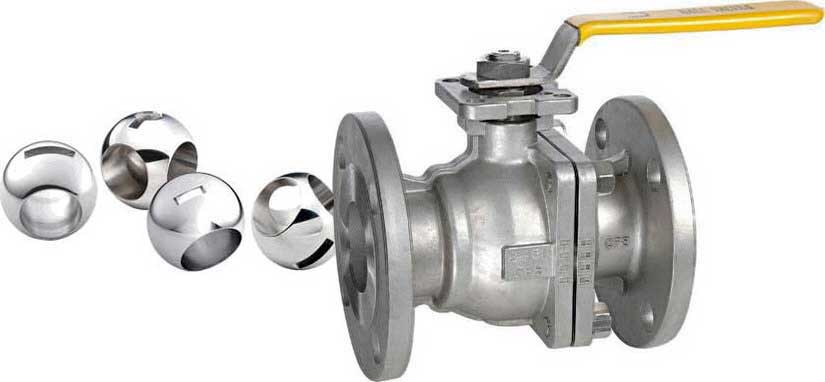Introduction of Ball Valves
Introduction to Ball valves
Ball valves
A Ball valve is a quarter-turn rotational motion valve that uses a ball-shaped disk to stop or start flow. If the valve is opened, the ball rotates to a point where the hole through the ball is in line with the valve body inlet and outlet. If the valve is closed, the ball is rotated so that the hole is perpendicular to the flow openings of the valve body and the flow is stopped.
Types of Ball valves
Ball valves are basically available in three versions: full port, venturi port and reduced port. The full-port valve has an internal diameter equal to the inner diameter of the pipe. Venturi and reduced-port versions generally are one pipe size smaller than the line size.
Ball valves are manufactured in different body configurations and the most common are:
- Top entry Ball valves allow access to valve internals for maintenance by removal of the valve Bonnet-cover. It is not required to be removed valve from the pipe system.
- Split body Ball valves consists of a two parts, where one part is smaller as the other. The ball is inserted in the larger body part, and the smaller body part is assembled by a bolted connection.
The valve ends are available as butt welding, socket welding, flanged, threaded and others.

Materials – Design – Bonnet
Materials
Balls are usually made of several metallics, while the seats are from soft materials like Teflon®, Neoprene, and combinations of these materials. The use of soft-seat materials imparts excellent sealing ability. The disadvantage of soft-seat materials (elastomeric materials) is, that they are not can be used in high temperatures processes.
For example, fluorinated polymer seats can be used for service temperatures from −200° (and larger) to 230°C and higher, while graphite seats may be used for temperatures from ?° to 500°C and higher.
Stem design
The stem in a Ball valve is not attached to the ball. Usually it has a rectangular portion at the ball, and that fits into a slot cut into the ball. The enlargement permits rotation of the ball as the valve is opened or closed.
Ball valve Bonnet
The Bonnet of a Ball valve is fastens to the body, which holds the stem assembly and ball in place. Adjustment of the Bonnet permits compression of the packing, which supplies the stem seal. Packing material for Ball valve stems is usually Teflon® or Teflon-filled or O-rings instead of packing.
Ball valves applications
The following are some typical applications of Ball valves:
- Air, gaseous, and liquid applications
- Drains and vents in liquid, gaseous, and other fluid services
- Steam service
Advantages and Disadvantages of Ball valves
Advantages:
- Quick quarter turn on-off operation
- Tight sealing with low torque
- Smaller in size than most other valves
Disadvantages:
- Conventional Ball valves have poor throttling properties
- In slurry or other applications, the suspended particles can settle and become trapped in body cavities causing wear, leakage, or valve failure.